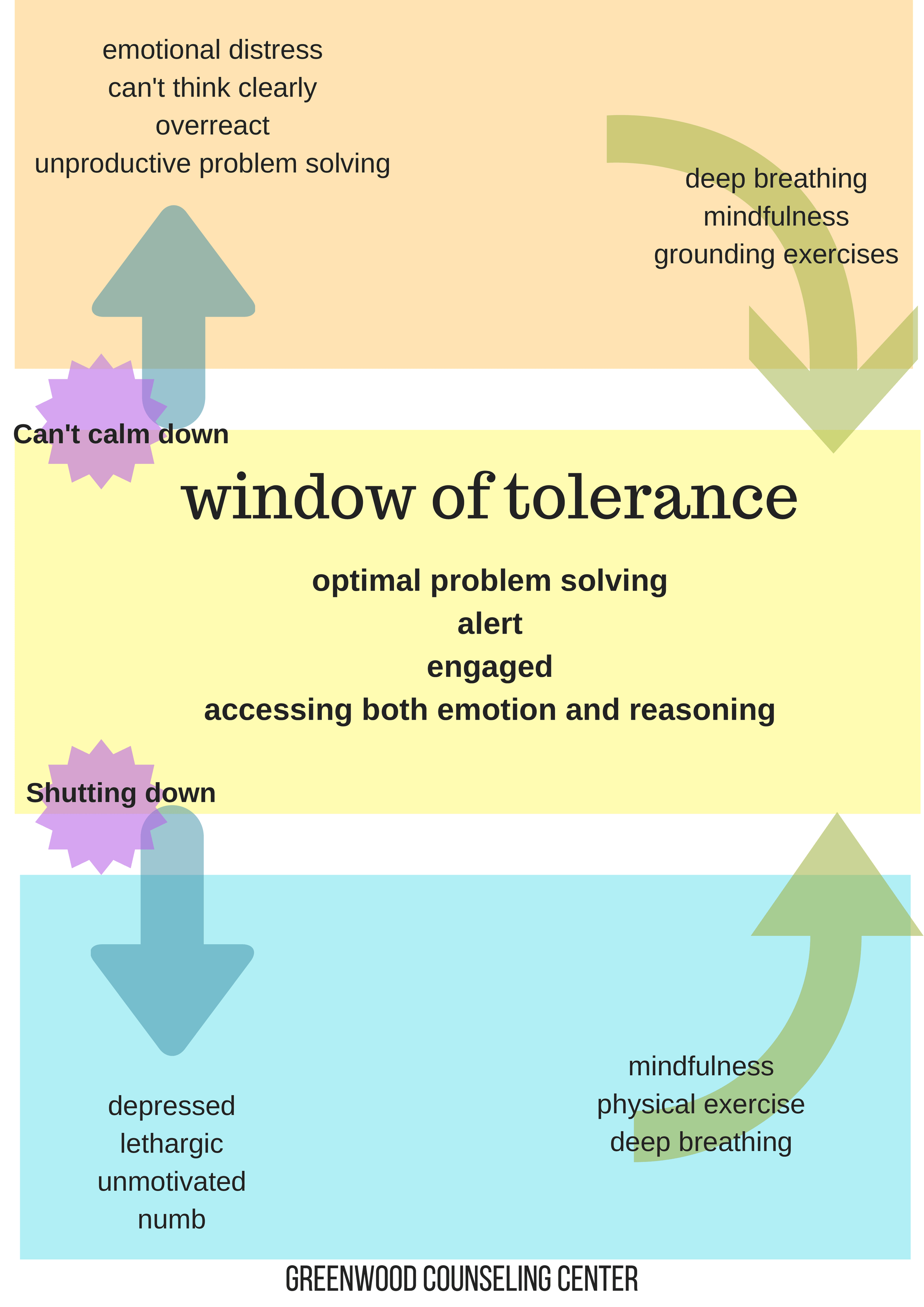Window of Tolerance: What It Is & How to Manage It
Throughout my personal therapy journey, one of the first concepts that was taught to me by my therapist was regarding the window of tolerance. Understanding this piece of information about my own brain brought greater awareness which then brought forth greater agency with my mental health.
What is the window of tolerance?
This is a term that was coined by Dr. Dan Siegel to describe an individual when they are within optimal functioning. In this optimal state, a person is neither hyperaroused or hypoaroused. It’s the sweet spot. This is the state-of-being that our best judgement, ideas, and personhood come from.
The states outside of our window of tolerance are hyperarousal and hypoarousal. Hyper-arousal is characterized as intense emotion like anger, anxiety, on edge/jittery, or simply feeling out of control. Then, hypoarousal, is the state of being frozen, numb, completely exhausted, or “being out of it”.
If we are triggered by something or someone, we may move out of our window of tolerance into one of those states. This coincides with the fight, flight, (both in hyperarousal) or freeze response (hypoarousal). Those who have experience traumatic events or stressful childhoods are often more at risk of this response in their body due to a learned defense response.
The beautiful thing about human brains is that they have the ability to change. This is where the word “neuroplasticity” comes from. So, our window of tolerance has the ability to widen and grow.
"Think of the window as the band of arousal (of any kind) within which an individual can function well. This band can be narrow or wide. If an experience pushes us outside our window of tolerance, we may fall into rigidity and depression on one hand, or into chaos on the other." Daniel Siegel from Mindsight: The New Science of Personal Transformation
So, how does one widen their window of tolerance?
This may seem cliché but grounding exercises work! If you find yourself outside your window of tolerance - taking a break, changing your environment, and noticing what is in the present can be a helpful way to regulate and re-enter your window of tolerance. Personally, if I can, I choose to get outside in some way! Feeling the fresh air, feeling the grass or leaves (or snow!), and taking a short walk helps regulate me and bring me back to the present.
Another option is the 5 Things exercise.
-
Name 5 things that you can see.
-
4 things that you can touch around you
-
3 things that you can hear
-
2 things that you can smell
-
1 thing that you can taste
This exercise forces you to slow down and take in the sensations surrounding you. It can shift away from racing thoughts to instead be slower, more attuned thoughts on the immediate moment.
Another option is deep breathing. My go-to breathing technique is known as the 4 x 4 x 4. So, inhale for 4 counts. Then exhale for 4 counts. Repeat this cycle for 4 minutes.
Lastly, healthy social connections, mental health therapy, and physical exercise help increase a person’s window of tolerance.
I hope this is helpful!
Written by: Hannah-Grace Kelley
References
Greenwood Counseling Center. (n.d.). Manage stress and increase well-being. https://greenwoodcounselingcenter.com/healthy-stress-management-increase-wellbeing/
Mayo Clinic Health System. (2020, June 6). 5, 4, 3, 2, 1: Countdown to make anxiety blast off. https://www.mayoclinichealthsystem.org/hometown-health/speaking-of-health/5-4-3-2-1-countdown-to-make-anxiety-blast-off
Mindfulness & Clinical Psychology Solutions. (n.d.). Your window of tolerance. https://mi-psych.com.au/understanding-your-window-of-tolerance/
National Institute for the Clinical Application of Behavioral Medicine. (n.d.). How to help your clients understand their window of tolerance. https://www.nicabm.com/trauma-how-to-help-your-clients-understand-their-window-of-tolerance/
